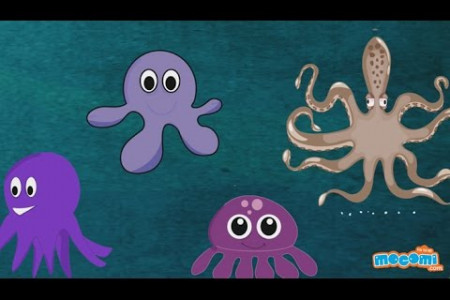
Whale Fall
COMMON ORGANISMS FOUND ON A WHALE FALL 1. Hagfish 2. Sixgill Shark 3. Rattail Fish 4. Eelpout Fish 5. Sea Pig 6. Pom-Pom Anemone 7. Muusoctopus 8. Giant Isopod 9. Amphipods 10. Grooved Tanner Crab WHALE FALL DIS C 0 V E R Y 11. Hesionid Worms 12. Ampharetid Worms 13. Osedax Worms 14. Brittle Star 15. Rubyspira Snails 16. Mussels ( When a whale dies, its body Bone eating Osedax Worms (red) often sinks to the seafloor. There, its carcass becomes Bacteria what is known as a whale fall. (yellow) The whale's body provides a sudden, concentrated food source and a bonanza for organisms in the deep sea for years to come. 17. Hooded Shrimp 18. Squat Lobster Remaining bones, depleted of all organic compounds Bacterial mat & "worm carpet" feed on organic material that has Identification Baleen The presence.of baleen, a filter-feed- ing system inside the mouths whales, help scientists identify which whale species they found. seeped into and around the surrounding sediment some 12 This dashed line represents the whale size before it was consumed. earth /blue STAGES OF A WHALE FALL STAGE 1: MOBILE-SCAVENGER STAGE, MONTHS-5 YEARS STAGE 2: ENRICHMENT-OPPORTUNIST STAGE, MONTHS - 2 YEARS STAGE 3: SULPHOPHILIC STAGE, UP TO 50 YEARS STAGE 4: REEF STAGE, UNKNOWN Scientists have identified four stages of a whale fall. The stages – which often overlap or blend together – are shown above, starting with the head (Stage 1) and ending at the (Stage varies depending on the size and species of the whale. At Mat Mcinsh | Produced by Matt Meintosh, Dayra McLaughin, Radhel Plunkett, Kate Thompson, Eizabeth Weinberg For a full ist of references, visit sancuaries. noaa gowmagazineswhale-fal TIMELINE A great number of polychaete worms, crustaceans, and other organisms colonize the bones and enriched.sediments surrounding the whale fall. Free-moving scavengers, like rattails, hagfishes, sharks, and Once the soft tissue is removed from the bones, bacteria, Osedax worms, clams, and other organisms break down lipids within the fatty bones and produce sulphides, which other organisms can then consume. Whale falls have only been studied for a few decades, but scientists believe the hard, min- eral skeleton left behind after nutrients have been consumed eventually provides structure for deep-sea suspension feeders. The dur stages is estimated, and octopuses, remove and consume the whale's soft tissues. COMMON ORGANISMS FOUND ON A WHALE FALL 1. Hagfish 2. Sixgill Shark 3. Rattail Fish 4. Eelpout Fish 5. Sea Pig 6. Pom-Pom Anemone 7. Muusoctopus 8. Giant Isopod 9. Amphipods 10. Grooved Tanner Crab WHALE FALL DIS C 0 V E R Y 11. Hesionid Worms 12. Ampharetid Worms 13. Osedax Worms 14. Brittle Star 15. Rubyspira Snails 16. Mussels ( When a whale dies, its body Bone eating Osedax Worms (red) often sinks to the seafloor. There, its carcass becomes Bacteria what is known as a whale fall. (yellow) The whale's body provides a sudden, concentrated food source and a bonanza for organisms in the deep sea for years to come. 17. Hooded Shrimp 18. Squat Lobster Remaining bones, depleted of all organic compounds Bacterial mat & "worm carpet" feed on organic material that has Identification Baleen The presence.of baleen, a filter-feed- ing system inside the mouths whales, help scientists identify which whale species they found. seeped into and around the surrounding sediment some 12 This dashed line represents the whale size before it was consumed. earth /blue STAGES OF A WHALE FALL STAGE 1: MOBILE-SCAVENGER STAGE, MONTHS-5 YEARS STAGE 2: ENRICHMENT-OPPORTUNIST STAGE, MONTHS - 2 YEARS STAGE 3: SULPHOPHILIC STAGE, UP TO 50 YEARS STAGE 4: REEF STAGE, UNKNOWN Scientists have identified four stages of a whale fall. The stages – which often overlap or blend together – are shown above, starting with the head (Stage 1) and ending at the (Stage varies depending on the size and species of the whale. At Mat Mcinsh | Produced by Matt Meintosh, Dayra McLaughin, Radhel Plunkett, Kate Thompson, Eizabeth Weinberg For a full ist of references, visit sancuaries. noaa gowmagazineswhale-fal TIMELINE A great number of polychaete worms, crustaceans, and other organisms colonize the bones and enriched.sediments surrounding the whale fall. Free-moving scavengers, like rattails, hagfishes, sharks, and Once the soft tissue is removed from the bones, bacteria, Osedax worms, clams, and other organisms break down lipids within the fatty bones and produce sulphides, which other organisms can then consume. Whale falls have only been studied for a few decades, but scientists believe the hard, min- eral skeleton left behind after nutrients have been consumed eventually provides structure for deep-sea suspension feeders. The dur stages is estimated, and octopuses, remove and consume the whale's soft tissues.
Whale Fall
Source
https://sanc...hale-fall/Category
EnvironmentGet a Quote











